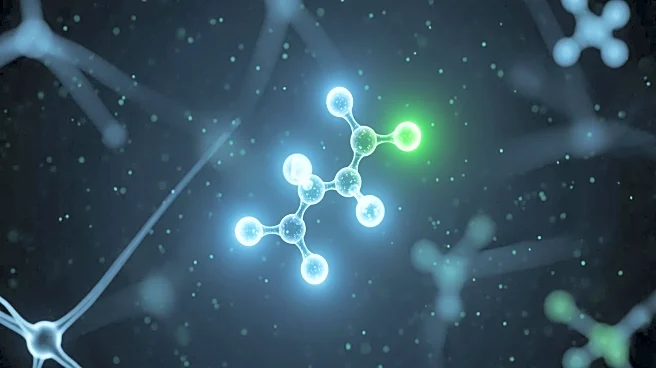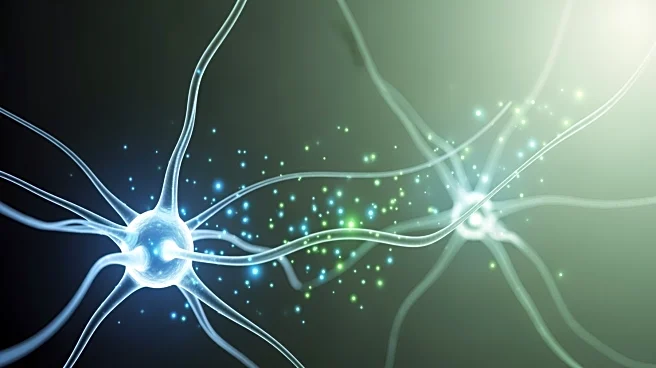What's Happening?
Researchers at Tulane University, in collaboration with eight other institutions, have identified a new mechanism by which nerve cells communicate, potentially leading to safer pain relief methods. The
study, co-led by Matthew Dalva and Ted Price, reveals that neurons release an enzyme called vertebrate lonesome kinase (VLK) outside the cell, which activates pain signals following an injury. This discovery changes the understanding of neuronal communication and could guide the development of drugs that act externally rather than penetrating the cell. The findings suggest that VLK influences cell signaling and could simplify drug design by targeting interactions on the cell surface.
Why It's Important?
The discovery of VLK's role in pain signaling offers a new approach to pain management, potentially reducing side effects associated with current treatments that target NMDA receptors. This could lead to the development of more effective and safer pain relief drugs. Additionally, the study provides insights into synaptic plasticity, which is crucial for understanding learning and memory processes. The ability to influence cell behavior externally may revolutionize drug development, offering a simpler and potentially less harmful method of treatment for neurological and other diseases.
What's Next?
Future research will focus on determining whether VLK's mechanism affects a limited set of proteins or represents a broader biological process. If widespread, this could reshape treatment strategies for various diseases. The collaborative effort will continue to explore the implications of this discovery for pain management and neural plasticity, potentially leading to new therapeutic approaches.












